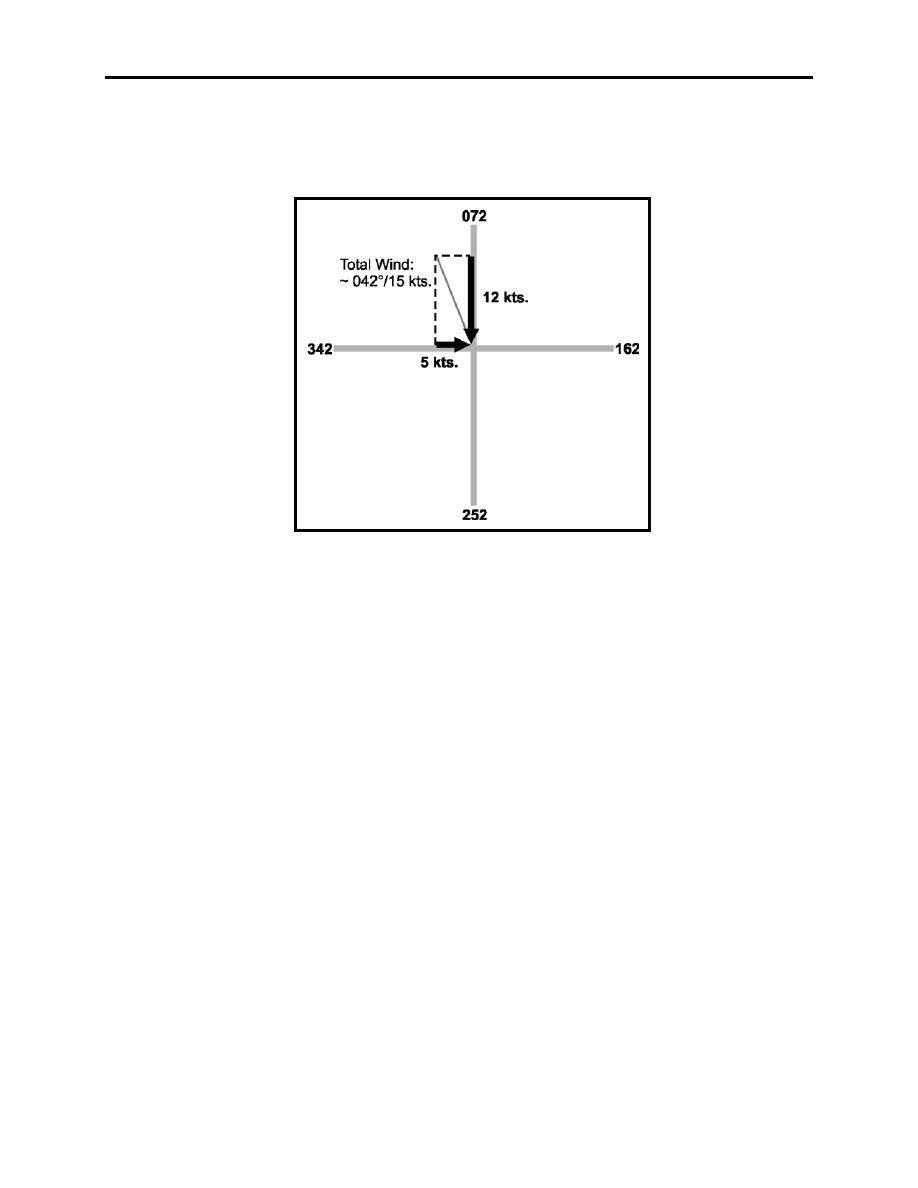 |
|||
|
|
|||
|
|
|||
| ||||||||||
|
|  T-6A NAVIGATION
CHAPTER FIVE
Figure 5-21 shows the winds drawn on a wind T. The EHSI could also be used, but what is
important is to realize the wind is more of a headwind than a crosswind, and the result should be
near the 10 to 11 clock position.
Figure 5-16 Wind "T"
Compensations
Because our time interval was less than 6 minutes, we will round the headwind component up to
15 knots. Since the crosswind was computed at 6 knots, it is best to round this to 5 knots.
Headwind compensations are easy. We simply add the headwind to our current base indicated
airspeed, and tell the pilot to fly 180 KIAS. If the component was a tailwind, we would have
subtracted 15 knots.
Crosswind compensations are also simple. For each 5 knots of crosswind crab 2. In this
example, we would tell the pilot to "Turn left 070."
The compensations remain valid until you change course or get new information about the wind.
512.
COMPOUND WIND PROBLEMS:
The previous examples cover the skills needed for low-level navigation. However, in the low-
level environment, crosswind and head/tailwind occur simultaneously. Analysis, compensations,
corrections, and updates may become confusing as these functions interact. Students must be
ready for these compound problems that are the nature of low-level flight. Below is another
example of wind analysis to help step through such problems again:
FLIGHT PROCEDURES
5-31
|
|
Privacy Statement - Press Release - Copyright Information. - Contact Us |